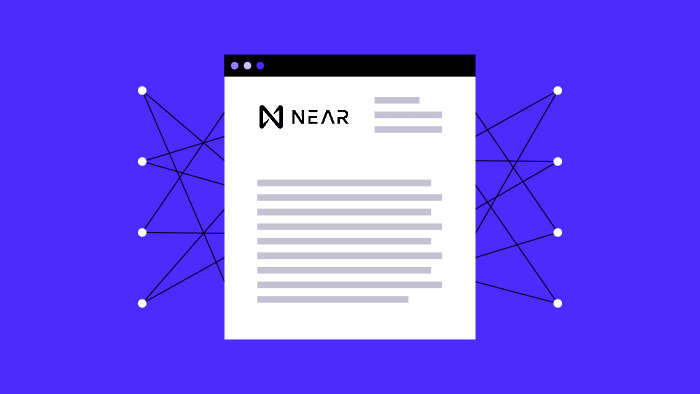New NEAR Contract Usage
A dynamic tool to analyze newly deployed contracts on NEAR protocol and examine which of the new contracts are gaining more users and expanding the NEAR ecosystem.
What is NEAR Protocol?
Near Protocol is a decentralized platform for building decentralized applications (dApps). It uses a proof-of-stake consensus mechanism and aims to provide fast and affordable transactions for its users. The platform is designed to be scalable, secure, and developer-friendly, with a focus on making it easy for developers to build and deploy dApps on the platform.
Near Protocol uses a unique sharding architecture to scale the network and increase transaction throughput. This architecture allows for parallel processing of transactions, which can lead to faster confirmation times and lower transaction fees.
The Near Protocol also has its native cryptocurrency, called NEAR, which is used to pay for transaction fees and other services on the platform. NEAR can also be staked to participate in the network's consensus mechanism and earn rewards.
What are Smart Contracts on NEAR Protocol?
In Near Protocol, a smart contract is a self-executing program that runs on the platform's blockchain. Smart contracts on Near are written in a programming language called Rust, which is known for its speed, security, and reliability.
Smart contracts on Near can be used to automate complex transactions, such as those involving digital assets or decentralized finance (DeFi) applications. They can also be used to enforce the rules and logic of a dApp, such as the distribution of rewards to users or the management of a decentralized autonomous organization (DAO).
One of the key features of smart contracts on Near is the ability to access and interact with data from other contracts or the platform's blockchain. This allows for the creation of more complex and interconnected applications.
Smart contracts on Near are also designed to be cost-effective, with lower gas fees and faster execution times compared to other blockchain platforms. This makes it easier and more affordable for developers to build and deploy dApps on the platform.
Contract Deployment
Deploying a contract on Near Protocol means uploading the smart contract code to the Near blockchain network and making it available for execution. This process is similar to uploading a program to a server, where it becomes available for use by clients.
To deploy a contract on Near, a developer would first write the smart contract code in the Rust programming language, using a toolchain that is specifically designed for Near development. The code is then compiled into WebAssembly (WASM), a low-level binary format that can be executed on the Near virtual machine.
Once the code is compiled, the developer can use a command-line interface (CLI) or a web-based tool like NEAR Studio to deploy the contract to the Near network. During deployment, the contract code is stored on the Near blockchain, and a smart contract account is created for the contract, which can receive transactions and interact with other contracts.
After the contract is deployed, it can be called and executed by other accounts on the Near network, such as dApps or user accounts. The contract can also be updated or modified by the developer, as needed, by redeploying a new version of the contract code.
Dashboard by Ali3N
Discord: Ali3N#8546
Telegram: Alik110
Twitter: Alik_110
Email: Alik110.72@Gmail.com
Check out My Other Dashboards at: https://flipsidecrypto.xyz/Ali3N
This dashboard is a tool to provide valuable insights into newly deployed contracts on NEAR protocol from your desirable date till today. All you have to do is to enter your desired date in From_Date provided parameter. Then the dashboard's graphs will show you some valuable insights about the newly deployed contracts during the selected time frame.
The default start date is December, 1st 2022. So, we are going to examine which of the new contracts that were introduced at the end of 2022 and in 2023, are gaining more users and expanding the NEAR ecosystem. Also, the majority of explanations in this dashboard will be about this time frame.
